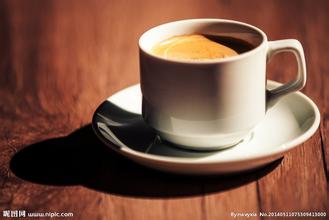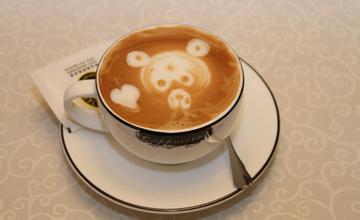An introduction to fine coffee beans in the manor with a winding, smooth and smooth Dominican coffee flavor.
In 1677, about 4,000 French lived in 11 villages in the west of the island. In 1697, France and Spain ceded the western part of the island to France according to the Leswick Treaty of the Alliance War, formally recognizing French sovereignty over Haiti in the western part of the Spanish island, and the eastern part of the Spanish island was called East Santo Domingo. With the continuous development of French agricultural economy on the island of Hispaniola and the introduction of African slave farming, Haiti became a very productive French colony at the end of the 18th century, when the population of Haiti reached more than 500,000. At this time, blacks accounted for nine out of every ten Haitians, making up the majority race. The population of the Spanish colony of Santo Domingo to the southeast is 150000, and the proportion of the two places is close to 1801, allowing L'Or é al to arrive in Santo Domingo. He abolished slavery on behalf of the French government. In 1802, Napoleon sent troops to conquer the whole island and ruled for several months. In October 1802, mixed-race and black people revolted against French rule and repelled the French army in 1803. On January 1, 1804, the rebels declared Santo Domingo independent and established the Republic of Haiti. But the defeated French still occupy the Santo Domingo area to the east. At the same time as the French invaded Spain in 1808, the rebels in Santo Domingo in the east of the island were assisted by Britain and Haiti, which were allied with Spain at that time, and finally repelled French troops. Boyer, who made Santo Domingo a Spanish colony again, began to grow cash crops on the island, carried out tax reform and opened up trade with foreign countries. Although these policies have greatly increased sugar cane and coffee production in Dominica, they are not widely accepted by farmers. Bouye thought that the liberation of many countries was a boon to many people, so he often did not pay any pay to Dominican soldiers in the army, and many soldiers began to rob local residents everywhere. This vicious circle finally led to economic stagnation and heavier and heavier fiscal taxes, causing people of many countries and even liberated slaves to unite against the rule of Bouaye and overthrew the Bouayer regime in 1843.
The earliest coffee in Dominica was introduced from Martinique (the overseas province of France), dating back to the early 18th century. Dominica is an island country with a tropical climate, with little change in temperature throughout the year. Except for the lower temperature in the Central Cordillera Mountains, which can reach less than 0 ℃ in winter, the average annual temperature in other areas is between 25 and 30 ℃, while affected by the mountain topography, the north and east face the northeast trade wind with an annual precipitation of 1500-2500 mm, which belongs to tropical maritime climate. The mountain forest is dense, the leeward southwest annual precipitation is 500-1000 mm, the dry season is long, belongs to the savanna climate.
The temperate climate in Dominica is conducive to coffee cultivation, and the best places to grow coffee are the Barahona region in the southwest and the Cibao Valley north of Santiago, Dominica's second largest city. The northern region, represented by Hibao, and the southern region, including Okayabani Santo Domingo, produce good coffee. Among them, the coffee produced by Santo Domingo and Barney is famous all over the world, which is almost synonymous with Domiga coffee. The most distinctive features of Dominica coffee are fresh and elegant, full of particles, excellent acidity and pleasant flavor (the two colleagues agree with this). Such flavor characteristics are not only related to varieties and soil quality, but also closely related to the picking and handling of raw beans. Coffee in Dominica is selected by the manual method with the highest cost, and workers mainly consider the fullness of coffee granules and the uniformity of coffee granules. According to these conditions, the coffee beans with the fullest and most uniform grains can represent the best quality in Dominica. The finest coffee. And only use the washing treatment method to ensure the high quality and stability of the coffee beans. the coffee beans treated with water washing have a cleaner taste and emit a touch of pure and soft aroma, which can make people feel a faint fruity aroma and a winding aftertaste. Smooth and smooth

Important Notice :
前街咖啡 FrontStreet Coffee has moved to new addredd:
FrontStreet Coffee Address: 315,Donghua East Road,GuangZhou
Tel:020 38364473
- Prev

Introduction to Puerto Rican coffee with pure, fragrant and granular flavor and taste of manor boutique coffee
Puerto Rico has a history of producing coffee for nearly 300 years and was once one of the most productive regions in the world. According to the Starbucks website, Spanish explorers brought coffee from Louis XIV plantations in France to the island in 1736. The fame of Yaucono Selecto was once indistinguishable from that of Kona in Hawaii and the Blue Mountains in Jamaica. It was also the palace of European kings and Vandi.
- Next

Introduction to the flavor and taste characteristics of Ethiopian Sidamochiso coffee with rich and aromatic flavor
In February 1977, Lieutenant Colonel Mengistu Haier Maryam (MENGISTU HAILE MARIAM) launched a military coup and served as Chairman of the interim military Administrative Council and head of State. In 1979, the Ethiopian Labor people's Party Organization Committee, dominated by soldiers, was established to implement an one-party system. In 1984, the Ethiopian Workers' Party was formed according to the Soviet Communist Party model. Mengistu, September 1987
Related
- Detailed explanation of Jadeite planting Land in Panamanian Jadeite Manor introduction to the grading system of Jadeite competitive bidding, Red bid, Green bid and Rose Summer
- Story of Coffee planting in Brenka region of Costa Rica Stonehenge Manor anaerobic heavy honey treatment of flavor mouth
- What's on the barrel of Blue Mountain Coffee beans?
- Can American coffee also pull flowers? How to use hot American style to pull out a good-looking pattern?
- Can you make a cold extract with coffee beans? What is the right proportion for cold-extracted coffee formula?
- Indonesian PWN Gold Mandrine Coffee Origin Features Flavor How to Chong? Mandolin coffee is American.
- A brief introduction to the flavor characteristics of Brazilian yellow bourbon coffee beans
- What is the effect of different water quality on the flavor of cold-extracted coffee? What kind of water is best for brewing coffee?
- Why do you think of Rose Summer whenever you mention Panamanian coffee?
- Introduction to the characteristics of authentic blue mountain coffee bean producing areas? What is the CIB Coffee Authority in Jamaica?

